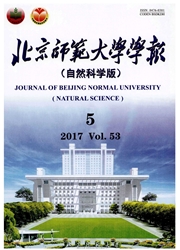

 中文摘要:
中文摘要:
城市化进程突出表现在不透水地面增加、绿地和水体景观减少、景观破碎和离散化等,由此引起了城市景观格局变化,导致降雨径流过程发生了质的变化,一定程度上造成了城市水体质量下降.通过对城市景观水环境响应及景观调控方法相关研究进行系统总结,得出目前研究中存在的不足之处包括1)城市景观水环境影响研究尚不深入,基于实际的城市水环境过程的景观格局及其表征指标研究较少,缺乏城市非点源输出过程及其影响的尺度效应研究;2)城市景观水环境响应关系研究方法单一,尚少见基于城市景观格局的水环境机制模型;3)现有景观调控方法缺乏系统研究,不同尺度同时开展景观调控的研究较少,缺乏基于水环境保护的城市景观动态调控理论和技术方法.在此基础上提出未来研究的着力点.
 英文摘要:
英文摘要:
Urbanization embodies growth oflandscape fragmentation and discretization, thusimpervious surface, decrease of grassland and waterbody,causing evolution of urban landscape pattern, leading toqualitative changes in the process of rainfall--runoff and to a certain extent leading to quality decline of urbanwater. Examination of works on impact mechanism of urban landscape pattern on water environment andlandscape regulation method indicates that current studies have the following shortcomings. First, studies onwater environment effects of urban landscape are not thorough, very few studies on landscape pattern matrixreflect water environmental process and scale effect on non-point source pollution process. Second, methodused to study water environment effects of urban landscape is monotonous, mechanism model of waterenvironment based on urban landscape pattern is rare. Third, very few studies on landscape regulation areconducted simultaneously on multiple scales, often with no regard to landscape dynamic regulation theory andtechnical methods based on water environmental protection. Future research focuses significantly impacting thecoordinate relationship between urbanization and environmental protection have been proposed.
 同期刊论文项目
同期刊论文项目
 同项目期刊论文
同项目期刊论文
 期刊信息
期刊信息
